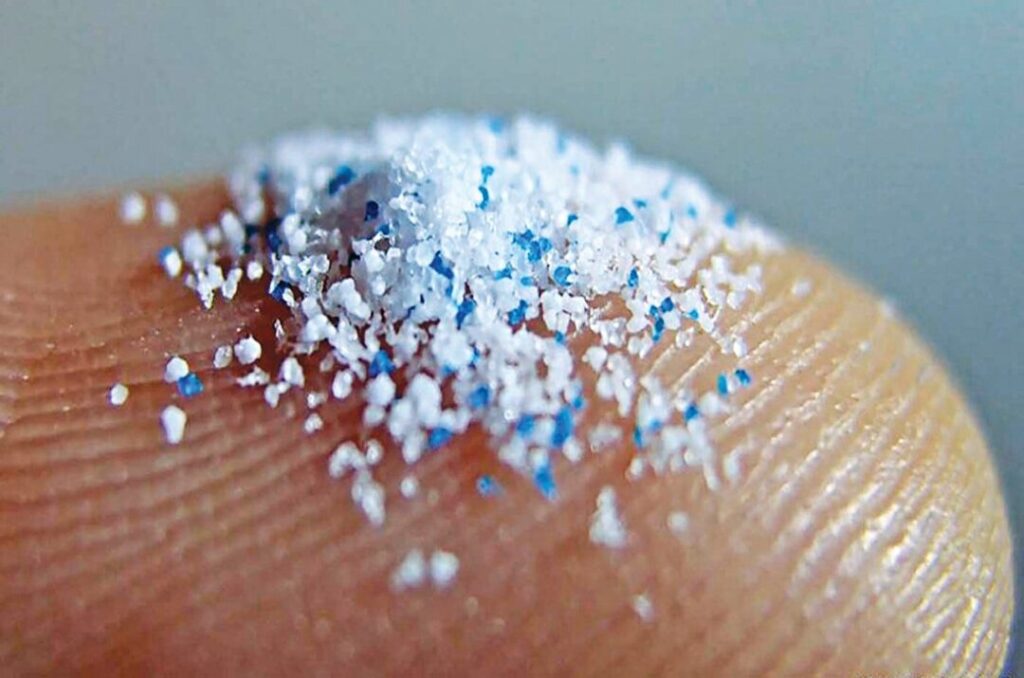
I sort of cringe when I hear about microscopic images which show “visible, jagged-edged ‘foreign bodies'” in our cells.
And yet, there’s the more familiar lead thing. Who wants lead in our water supply (tap, bottled, etc.)? Aren’t all parents concerned? How have perspectives and perceptions changed in the past? In the present.
Even with modern chemistry, microscopes, chemical analysis, lab research & group studies, what does it take for collective agreement on the data? To trust the science? To take collective (political) action? To change habits?
When does a risk move from the background to the foreground of our lives? Change from being abstract & impersonal to consequential? On a daily basis.
When does correlation & awareness connect with causality? When does political narrative catch up with reality?
So … plastic. It’s not just litter on the beach. It’s where the rubber meets the road … your comfy synthetic clothing gets washed and dried.
As noted in this article (below):
Studies have shown that the two biggest contributors of microplastics in the environment are car tires and synthetic clothing.
It’s been found in “various [human] organs, human blood, placenta and breast milk.”
• LA Times > “Microplastics may harm heart health” by Susanne Rust (March 11, 2024) – “To my knowledge, this is the first report to link microplastics with human disease,” said Landrigan [director of the Program for Global Public Health and the Common Good at Boston College, who was not involved in the study].
In a study released Wednesday in the New England Journal of Medicine, an international team of physicians and researchers showed that surgical patients who had a build-up of micro and nanoplastics in their arterial plaque had a 2.1 times greater risk of nonfatal heart attack, nonfatal stroke or death from any cause in the three years post surgery than those who did not.
Speaking of lead in our drinking water: There is no known safe level. (Children are especially vulnerable.) There’s a cost. There’s equity. There’s politics. What’s the timeline?
• LA Times > Perspectives > “GOP would rather keep poisoning kids with lead” by Michael Hiltzik (March 13, 2024) – The lead crisis in Flint, Mich., erupted as a national scandal in 2011, but it was the tip of the iceberg.